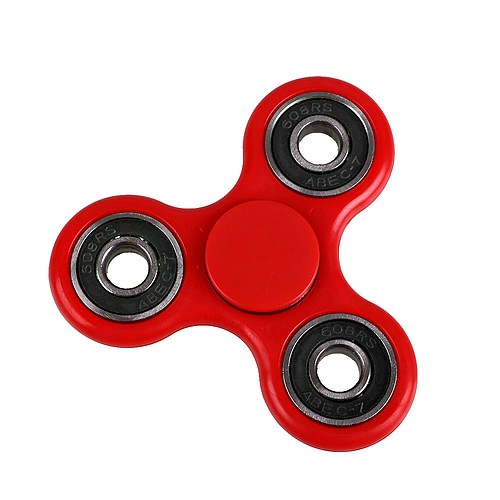- April 25, 2024
-
-
Loading

Loading

ORANGE COUNTY If your child has insisted on having a fidget spinner of his or her own in the last couple of months, you’re not alone.
The small, ceiling fan-like toy has taken the spotlight as the newest trendy object that kids are loving. Fidget spinners have three prongs that revolve around a circle at their center, which has bearings and allows the prongs to be spun.
However, they’re not marketed as a “just another toy.” Manufacturers claim that fidget spinners help relieve stress and anxiety and can help kids with attention-deficit/hyperactivity disorder better manage their restlessness, providing an outlet for nervous energy.
According to the Centers for Disease Control and Prevention, a survey of parents of children with ADHD shows that about 11% of children between the ages of 4 and 17 — that’s about 6.4 million — have been diagnosed with ADHD.
With so many children diagnosed, parents are continuously looking for ways to help relieve their children’s symptoms.
But according to interviews with psychologists from NPR and Business Insider, the toys are just that — toys, not treatments. Many psychologists say that although the toys are marketed as being helpful for hyperactivity, there is no scientific evidence to support these claims.
Orange County Public Schools officials said so far, the toys do not seem to be an issue in the district and counselors have not had to address it.
However, some schools have decided to be proactive in preventing distraction and are not allowing the toys to be out during the school day. At Rock Springs Elementary in Apopka, a message was posted on the school’s website May 5 announcing that the spinners are no longer allowed in school.
“Effective today, fidget spinners will no longer be allowed at Rock Springs Elementary. Please have your student keep them at home,” the message read. “If they are seen at school, they will be taken away and given back at the end of the day. Fidget spinners are now causing issues on buses, in the cafeteria and in the classroom. Students are using the fidget spinner as a toy, and all toys are to be kept at home.”
Becca Mauk’s daughter goes to Ocoee Elementary, where administrators say the spinners are allowed but preferably not during instruction time.
“I’m divided on (the spinners),” Mauk said. “I feel children spend many hours sitting in a classroom not moving when it is age appropriate for them to be able to move around and fidget, if you will. During their already-limited free time, I think they should be able to use them. Taking them out in classrooms during lessons is an altogether different story.”
But some teachers are using the phenomenon as a teaching moment. At Audubon Park Elementary, third-grade teacher Damary Whelan had her students participate in a fidget spinner-centered lesson and STEM lab.
“I started to notice that all of my students were bringing fidget spinners to class; I’m sure almost every teacher in the country also noticed this,” Whelan said. “Instead of banning them, I decided to embrace them. I did some research and found articles and labs that could easily be implemented into the standards that I was teaching.”
With Whelan’s lesson, the students began by reading articles about the pros and cons of fidget spinners and the history and purpose of the device. The class then split into two teams and had a structured debate about the benefits of fidget spinners in the classroom.
Students also completed a STEM challenge in which they spun the spinners on their fingers and then on the table, timed how long they spun for and recorded their data. They converted and graphed the data using minutes or seconds, compared results with classmates and determined variables such as bearing type, spinner quality and human error.
“I was able to cover reading, math, history, science and writing,” Whelan said. “The students got the fidget spinners out of their systems, and their presence in the classroom has steadily declined. In fact, I haven’t seen one fidget spinner today.”
Baldwin Park resident Juli Textor’s son is a student in Whelan’s class and enrolled in the school’s gifted program. He loves the spinners, she said, and enjoyed the learning experiment.
“As a former teacher, I was concerned about it going to school and becoming a distraction, but I personally think they are pretty cool little gadgets,” Textor said. “He loves them — still wants a new one just about every week.”
Contact Danielle Hendrix at [email protected].